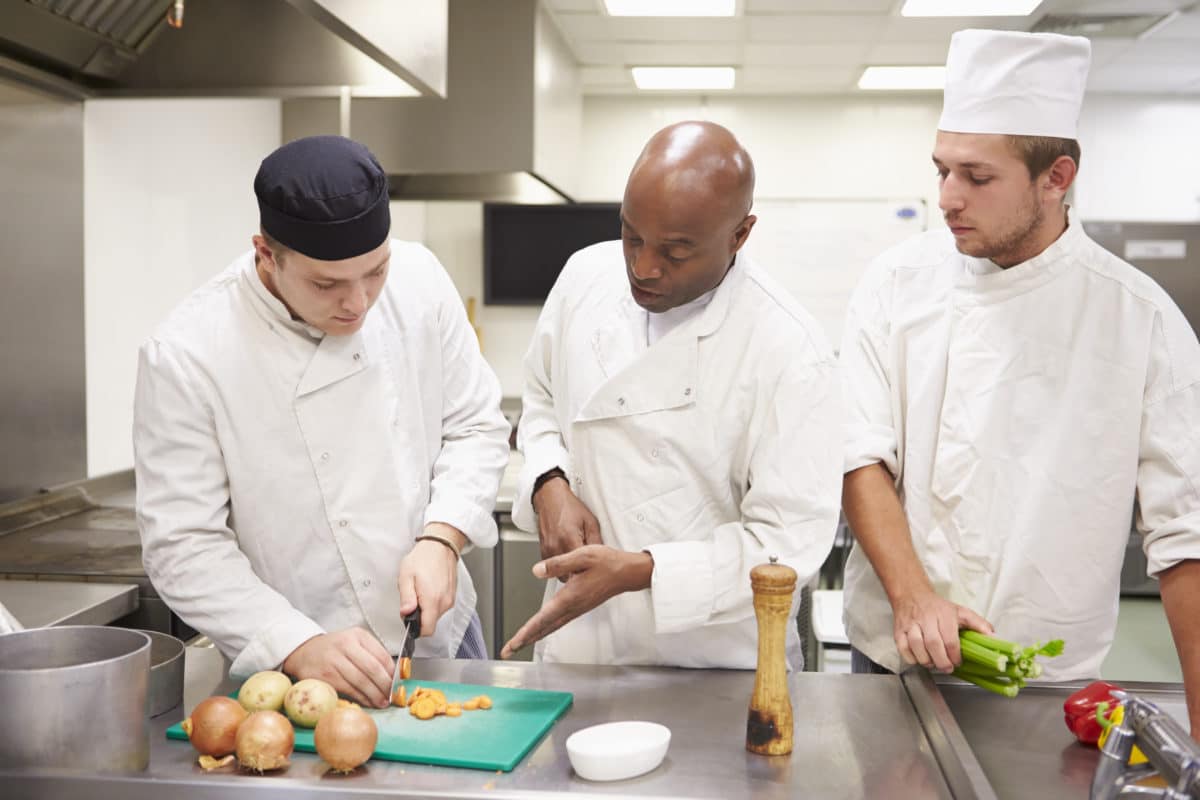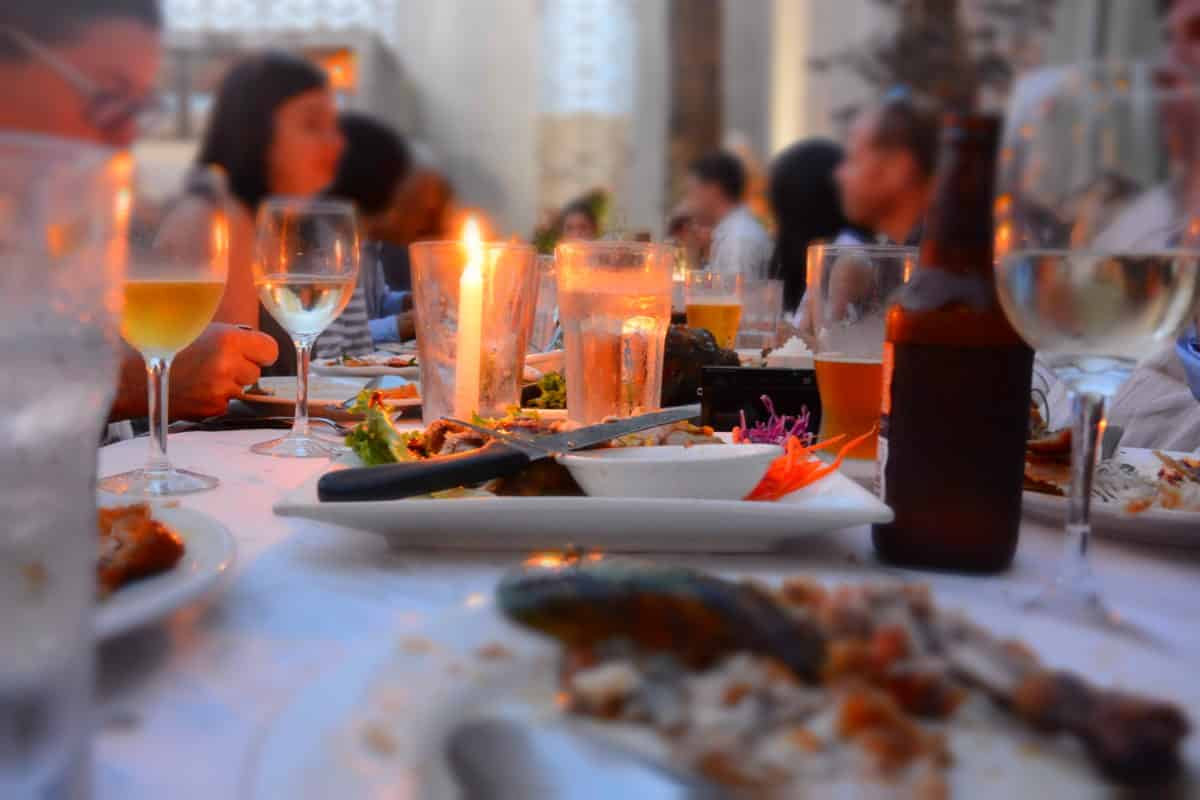The first day of culinary school can be an exhilarating and equally terrifying experience. There is the thrill of starting something new, the stress of not knowing what to expect, and the joy of making new friends. My first day at The Culinary Institute of America (CIA) in Hyde Park, New York, was filled with all those things, but also a tremendous amount of responsibility to get the most out of the program as possible.
Getting to culinary school took me a long time. I spent several years in high school working in restaurants. The most memorable high school job was at a busy fine dining restaurant, and the chef, while a terrific mentor, convinced me not to pursue a culinary education. Instead, I studied communications in college, followed by a decade-long career in print journalism. Throughout my career as a writer, and while in college, I managed to get even more experience working in restaurants. My passion for food ultimately led me to the renowned culinary school in the Hudson Valley. It only took me 20 years, but I finally made it.
As a non-traditional student (that’s what the CIA calls any student not fresh out of high school), culinary school is about two things: getting the absolute best possible education, and living up to the sacrifices my wife and I made for culinary school to be a reality. We sold our home in Maryland; I left a great job as an education journalist; my wife managed to keep her job and work remotely in New York, but at the expense of frequent trips back to Maryland; and we said goodbye to our friends and family. Of course, that list doesn’t cover the very large financial sacrifice of culinary school, but that’s to be expected at any college. So far all the sacrifices have been worth it.
The first term of culinary school is all about introducing students to food safety, nutrition, culinary math, the history and culture of food, and, of course, the fundamentals of cooking. Every day in the Fundamentals kitchen, I practiced my knife cuts, both precision and production cuts. I spent the 15-week term learning how to make proper broth and stock, how to clarify those stocks into consommé, and how to roast, braise, sear, sauté, fry, and poach. The first term is a slow burner, but things pick up quickly by the second semester.
The CIA operates on a three-week block schedule. Every three weeks a group of students start school, another group goes out on externship to get real life experience, another group returns from their externship, and another group graduates. With just three weeks off in the summer and another three off in the winter, the school has a steady flow of students coming and going throughout the year.
By the second semester, my classmates and I were in the thick of the program. Those three week blocks were coming and going fast. We learned how to cater and run a banquet, we honed our line cooking skills, and we worked in our high volume kitchen, preparing breakfast, lunch, and dinner for hundreds of students and staff.
One of the best perks about culinary school is the meal plan. Just about everything students cook makes its way throughout the campus. When you’re in a production kitchen, like Intro to à la Carte, you practice your skills by cooking meals for fellow students. Even the stocks made by students in Fundamentals circulate throughout the campus.

If the CIA has one major flaw, it’s that students only get a handful of chances to practice skills like meat and fish fabrication simply because the program covers so much ground in a short amount of time. Of course there are other challenges, like an attendance policy that rivals West Point, but as an adult student, I feel like the school’s strict reputation is more designed to curb college-age behavior than to mirror industry standards.
The majority of the chef-instructors I encountered are top notch educators. They are tremendously passionate about food, and the best chefs bestow that passion upon their students. As in any institution there are a few rotten eggs, but luckily the three-week schedule ensures you’re never stuck with the rare bad instructor for too long.

At the end of the second term, students are released into the real world to spend 15 weeks working in the industry. To go along with my non-traditional student persona, I did my externship in the test kitchen of Fine Cooking in Newtown, Connecticut. It was a transformative experience, and while I am not terribly surprised that I found my way back to publishing, it did provide me with renewed direction for my future. The test kitchen was one of only a handful of alternative sites. Most students go to one of the many CIA approved restaurants, hotels, resorts, casinos, and catering companies.
The third semester externship is the most common time for groups of students to exit. My start date had about 40 culinary arts students, but after returning from externship, that group shrank to about 20. Students either drop out after experiencing the stress of a commercial kitchen, or they come back later. It is also common for externs to get job offers and opt to continue working instead of returning to school.
It is important for all new students to forge a strong bond with their classmates. To truly be successful, you’ll have to rely on your classmates to have your back, and every day you’ll have to work extra hard to ensure your peers don’t fall behind. This is one of the big differences between culinary school and a traditional college. At culinary school, you get graded on your performance each and every day, in all classes, from production kitchens to academic classes. You simply don’t have time to be lazy, forgetful, or ambivalent. You have to work well with others to succeed and you have to stay laser focused on your tasks.
During orientation, we were challenged by the president of the CIA to work harder than every other student in our group each and every day. I believe a more positive challenge would be to not let any of your classmates fall behind. After all, the school is training young people to become chefs, and the best chefs lead by example and inspire their staff to put forward their best work every day. ![]()
At the end of the second term, students are released into the real world to spend 15 weeks working in the industry. To go along with my non-traditional student persona, I did my externship in the test kitchen of Fine Cooking in Newtown, Connecticut. It was a transformative experience, and while I am not terribly surprised that I found my way back to publishing, it did provide me with renewed direction for my future. The test kitchen was one of only a handful of alternative sites. Most students go to one of the many CIA approved restaurants, hotels, resorts, casinos, and catering companies.
The third semester externship is the most common time for groups of students to exit. My start date had about 40 culinary arts students, but after returning from externship, that group shrank to about 20. Students either drop out after experiencing the stress of a commercial kitchen, or they come back later. It is also common for externs to get job offers and opt to continue working instead of returning to school.
It is important for all new students to forge a strong bond with their classmates. To truly be successful, you’ll have to rely on your classmates to have your back, and every day you’ll have to work extra hard to ensure your peers don’t fall behind. This is one of the big differences between culinary school and a traditional college. At culinary school, you get graded on your performance each and every day, in all classes, from production kitchens to academic classes. You simply don’t have time to be lazy, forgetful, or ambivalent. You have to work well with others to succeed and you have to stay laser focused on your tasks.
During orientation, we were challenged by the president of the CIA to work harder than every other student in our group each and every day. I believe a more positive challenge would be to not let any of your classmates fall behind. After all, the school is training young people to become chefs, and the best chefs lead by example and inspire their staff to put forward their best work every day. ![]()
First published August 2016
